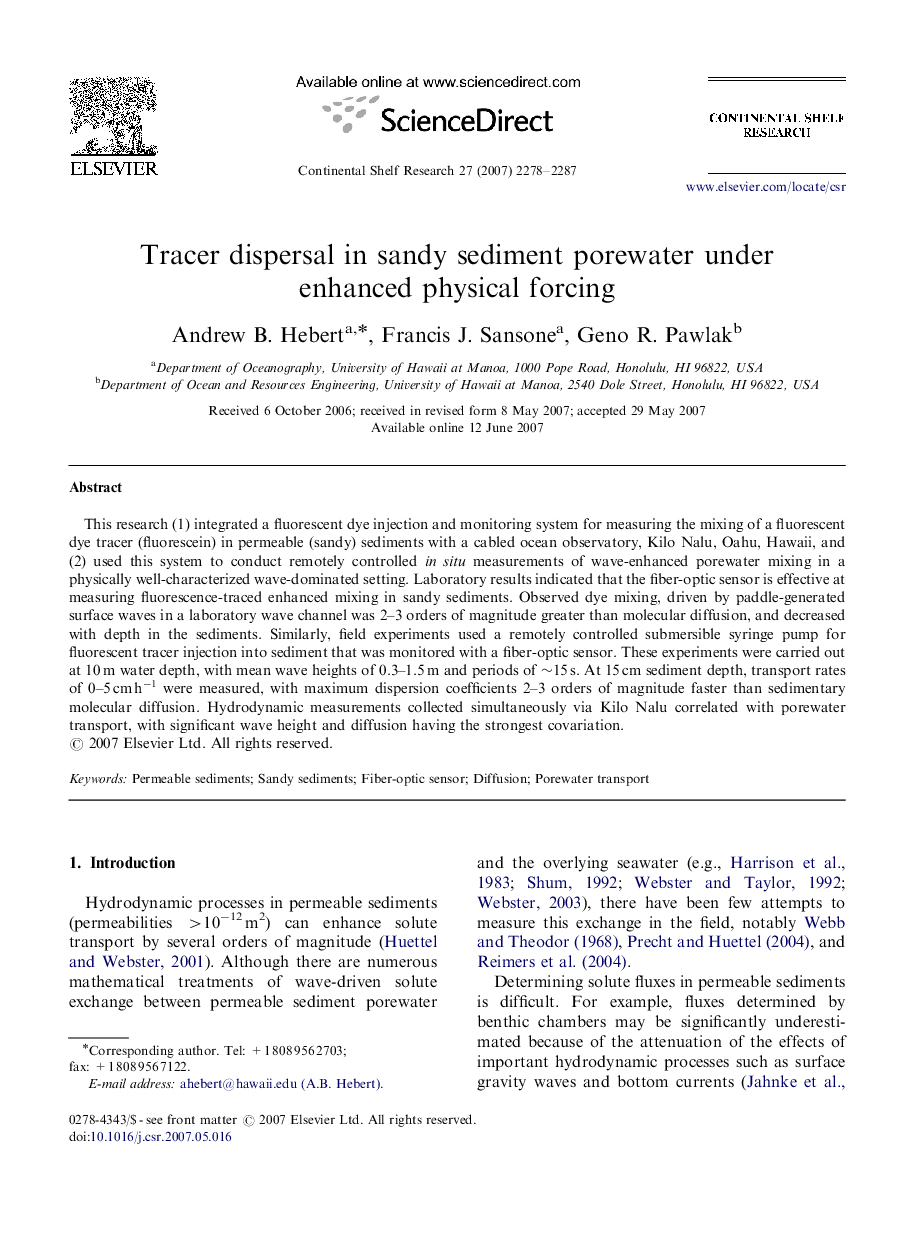| Article ID | Journal | Published Year | Pages | File Type |
|---|---|---|---|---|
| 4533806 | Continental Shelf Research | 2007 | 10 Pages |
This research (1) integrated a fluorescent dye injection and monitoring system for measuring the mixing of a fluorescent dye tracer (fluorescein) in permeable (sandy) sediments with a cabled ocean observatory, Kilo Nalu, Oahu, Hawaii, and (2) used this system to conduct remotely controlled in situ measurements of wave-enhanced porewater mixing in a physically well-characterized wave-dominated setting. Laboratory results indicated that the fiber-optic sensor is effective at measuring fluorescence-traced enhanced mixing in sandy sediments. Observed dye mixing, driven by paddle-generated surface waves in a laboratory wave channel was 2–3 orders of magnitude greater than molecular diffusion, and decreased with depth in the sediments. Similarly, field experiments used a remotely controlled submersible syringe pump for fluorescent tracer injection into sediment that was monitored with a fiber-optic sensor. These experiments were carried out at 10 m water depth, with mean wave heights of 0.3–1.5 m and periods of ∼15 s. At 15 cm sediment depth, transport rates of 0–5 cm h−1 were measured, with maximum dispersion coefficients 2–3 orders of magnitude faster than sedimentary molecular diffusion. Hydrodynamic measurements collected simultaneously via Kilo Nalu correlated with porewater transport, with significant wave height and diffusion having the strongest covariation.
